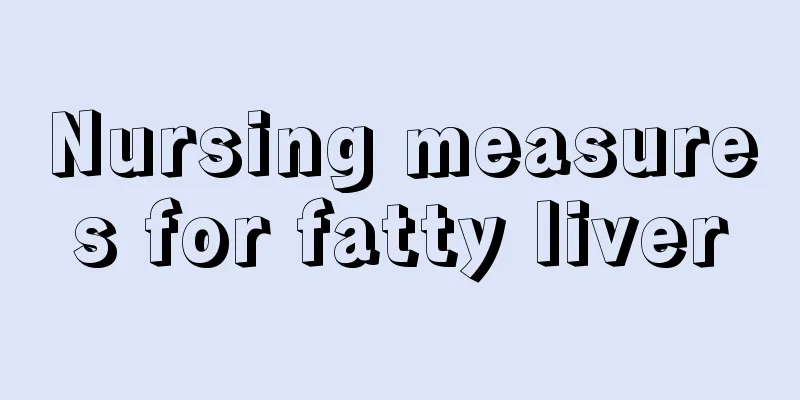Pepsinogen 1 is high

|
Pepsin is a very common enzyme secreted by our stomach, and its main function is to digest protein. If there is a problem with the stomach, the condition can be clarified by testing pepsin. High levels of pepsinogen 1 are common in diseases such as peptic ulcer and gastritis. We can make a preliminary judgment based on our understanding of these two diseases and our own symptoms. Clinical manifestations of peptic ulcer 1. Characteristics of peptic ulcer pain (1) Long-term: Since ulcers can heal on their own after they occur, but they tend to recur after healing, upper abdominal pain is often characterized by long-term and recurrent attacks. The average course of the disease is 6 to 7 years, but sometimes it can last as long as 10 to 20 years, or even longer. (2) Periodic upper abdominal pain is a characteristic of this type of ulcer, especially in duodenal ulcers. Episodes of mid-upper abdominal pain may last for days, weeks, or longer, followed by longer periods of relief. It can occur throughout the year, but is more common in spring and autumn. (3) The relationship between rhythmic ulcer pain and diet has obvious correlation and rhythm. During the day, gastric acid secretion is lowest between 3 a.m. and breakfast, so pain rarely occurs during this time. The pain of duodenal ulcer usually occurs between meals and continues until relieved after the next meal or taking antacids. Some patients with duodenal ulcer may experience pain in the middle of the night due to higher stomach acid at night, especially those who have eaten before going to bed. The pain of gastric ulcer occurs irregularly, often within 1 hour after a meal, gradually relieved after 1 to 2 hours, and then the above rhythm reappears after the next meal. (4) Pain location: The pain of duodenal ulcer often occurs in the upper and middle abdomen, or above the navel, or slightly to the right of the navel; the pain of gastric ulcer also often occurs in the upper and middle abdomen, but slightly higher, or below the xiphoid process or slightly to the left of the xiphoid process. The pain area is about several centimeters in diameter. Because the pain of hollow viscera is generally not precisely localized on the body surface, the location of the pain may not accurately reflect the anatomical location of the ulcer. (5) The pain is usually dull, burning, or hunger-like, and is generally mild and tolerable. Persistent severe pain indicates ulcer penetration or perforation. (6) Influencing factors: Pain is often induced or aggravated by mental stimulation, excessive fatigue, improper diet, drug effects, climate change, etc.; it can be alleviated or relieved by resting, eating, taking antacids, pressing the painful area with hands, vomiting, etc. 2. Other symptoms and signs of peptic ulcer (1) Other symptoms In addition to upper abdominal pain, this disease may also cause other gastrointestinal symptoms such as increased salivation, heartburn, nausea, acid belching, belching, nausea, and vomiting. Appetite usually remains normal, but occasionally the patient may be afraid to eat due to pain after eating, resulting in weight loss. Systemic symptoms may include manifestations of neurosis such as insomnia, or symptoms of autonomic nervous system disorders such as bradycardia and excessive sweating. (2) Signs During the ulcer attack, there may be localized tenderness in the upper and middle abdomen, but the degree is not severe. The location of the tenderness is usually consistent with the location of the ulcer. Clinical manifestations of gastritis 1. Acute gastritis The onset is acute and the clinical symptoms vary in severity. The most common is acute simple gastritis, the main symptoms of which are upper abdominal pain, abdominal distension, belching, loss of appetite, nausea, vomiting, etc. Those caused by Salmonella or Staphylococcus aureus toxins are often accompanied by diarrhea, fever, and even dehydration and shock. Acute erosive hemorrhagic gastritis may cause vomiting of blood and black stools. The main clinical manifestations of acute suppurative gastritis are systemic sepsis and acute peritonitis. The symptoms of acute corrosive gastritis are the most obvious, manifested as severe pain in the mouth, throat, behind the sternum, and upper abdomen after swallowing corrosives, accompanied by nausea, vomiting, and even vomiting blood. The mucous membranes of the lips, mouth, and throat can produce caustic scabs of different colors, which help to identify various corrosive agents. 2. Chronic gastritis The clinical manifestations of different types of gastritis may vary, but the symptoms lack specificity, and the severity is often inconsistent with the severity of the lesion. Some patients may be asymptomatic. (1) Upper abdominal pain or discomfort Most gastritis patients experience upper abdominal pain or discomfort. Most upper abdominal pain is irregular and has nothing to do with diet. The pain is generally diffuse upper abdominal burning pain, dull pain, bloating, etc. (2) Upper abdominal distension and early satiety Some patients experience abdominal distension, especially a noticeable feeling of fullness after a meal. It is often caused by food retention in the stomach, delayed emptying, and indigestion. Early satiety refers to a feeling of fullness soon after eating despite having a clear sense of hunger, and a significant reduction in food intake. (3) Belching, acid reflux, and nausea Belching indicates an increase in gas in the stomach, which is discharged through the esophagus, temporarily relieving upper abdominal fullness. Acid reflux is caused by increased gastric acid secretion. (4) Other severe atrophic gastritis patients may have weight loss, glossitis, and diarrhea; autoimmune gastritis patients may have anemia. |
>>: Will the hole close up when the dental plaque falls off
Recommend
Can you get pregnant if you have ovarian cancer?
As the social environment continues to change, th...
Can goose grass cure rhinitis? The effect is quite good
It is very uncomfortable to suffer from rhinitis,...
Are there any folk remedies for treating lung cancer? The most comprehensive Chinese medicine folk remedies for treating lung cancer
50 grams each of Hedyotis diffusa and Scutellaria...
What does pericardial effusion mean
Pericardial effusion is mainly caused by tubercul...
How to remove mildew spots on clothes
When the weather is too humid, clothes placed in ...
Rock sugar and radish water treat wind-heat cough
Wind-heat cough is a common minor disease. Its ma...
What is the pylorus_Where is the pylorus_Which part of the human body is the pylorus
Many people have no idea which part of the human ...
What are the bases for diagnosing pituitary tumors
The diagnosis of pituitary tumor is very importan...
What are the measures to treat lung cancer? The three major clinical treatments for lung cancer
When people have a disease, the first thing they ...
Can soy milk be mixed with milk powder?
The nutritional value of milk powder has always b...
Can breast cancer be treated without surgery?
Non-surgical treatments for breast cancer include...
What are the harms of smoking to the human body
Smoking is a very bad lifestyle habit, and this l...
How to install a single denture after tooth extraction
Once there is a problem with the teeth, it will a...
What are the early symptoms of bone cancer? Pay attention to these symptoms
With the accelerated pace of life and serious env...
How to put your hair when it curls inwards when sleeping
Hairstyle is very important for a girl. A nice ha...









